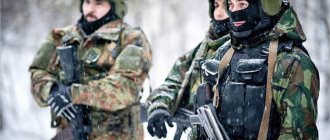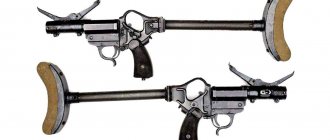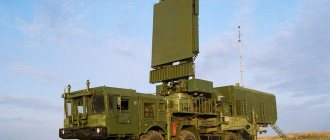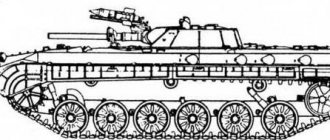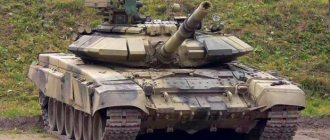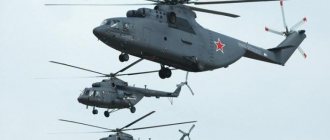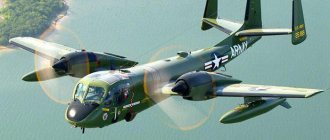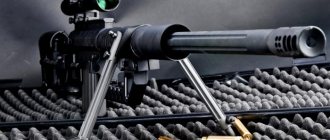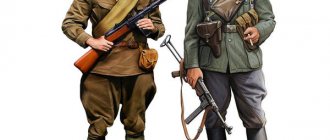“A soldier doesn’t need extra property!” - these words of a famous song can be the motto of those specialists who are developing a set of equipment worn by military personnel in combat conditions or in exercises simulating such.
But with all the minimization of the soldier’s needs, the warrior must have everything necessary to complete the assigned task. This is especially true for the issue of equipping fighters in those units that are commonly called special units. Sometimes too much depends on their actions.
It turns out that a special forces soldier needs quite a bit. And the further you go, the more things are needed in battle.
All these items, each of which can be used at the most critical moment of the battle, are generally called equipment.
What is included in a firefighter's combat clothing kit?
The BOP set includes trousers (or overalls) and a jacket with removable thermal insulation linings. In everyday life of fire departments, the kit is called - Combat.
Interesting materials:
Who played white in Brigade 2? Who played the Kray twins? Who played the twins in Alice in Wonderland? Who played Bourne? Who played the devil in Evenings on a Farm near Dikanka? Who played truckers? Who played the girl in the Twilight movie? Who played Dasha and Venik's daughter? Who played daughter Nigar in the Magnificent Century? Who played the genie in the movie Aladdin's Lamp?
Soldier's equipment: heavier or more mobile?
Today, in NATO countries (especially the USA and Great Britain) there is a new trend: more than 60% of all military purchases are directed to the individual protection of military personnel - especially intelligence officers, infantrymen, engineers, that is, all those who directly take part in hostilities. In this case, the experience of NATO countries, in which the development of equipment has always been given great importance, is indicative. In Russia, historically, since the times of the tsarist army, the issue of equipping military personnel has been given secondary importance. That is why the famous shoulder backpacks-sidors could be seen in our army for almost hundreds of years. In general, the creation of promising sets of combat equipment in the history of the Russian armed forces is one of the most protracted and painful topics. Work on such equipment began back in Soviet times. Attempts to create a single universal equipment for professional soldiers in modern Russia have not stopped since 1993. During this time, enterprises have prepared many ready-made kits, some of which the military even purchased in whole batches, but they are still difficult to see on ordinary soldiers. Everyone has heard of the sets of modern combat equipment “Barmitsa”, “Permyachka”, “Ratnik”, but the volumes of their supply to the army are ridiculous, and the military has its own complaints about them.
At the same time, it can already be argued that the Russian General Staff has made a choice in favor of the mobility of fighters. According to the state armaments program, the army was supposed to receive 45 thousand body armor, 45 thousand helmets and five thousand anti-fragmentation kits by 2013. But the Ministry of Defense backed down and deleted all helmets and kits from the program, leaving only 3,000 body armor. The Ministry of Defense emphasized that the command of the Russian armed forces is not satisfied with the weight of modern Russian body armor. While the Ministry of Defense is arguing with manufacturers of ammunition and personal protective equipment about the technical characteristics of products, Russian soldiers are wearing helmets, which, in fact, were developed before the Great Patriotic War. At the same time, modern composite helmets 6B27 and 6B7-1M can be found only on every twentieth fighter.
“Permyachka” equipment set
While in Russia they still can’t decide on a single set of soldier’s equipment, the cost of weapons and equipment for a modern American infantryman has reached $17,442. This is almost 10 times more than during the Second World War and the Vietnam War (in terms of current prices of 1981 and 1941 dollars, respectively). At the same time, a modern US Army soldier constantly carries at least 34 kg on himself. cargo - taking into account body armor, weapons, protective shields, etc. All of its predecessors were significantly less loaded. For example, during the Second World War, one American infantryman carried about 16.2 kg, during the Vietnam War - 15.9 kg.
At the same time, the increase in the cost and weight of equipment had a positive impact on the safety of fighters. During World War II, for every 100,000 American soldiers, 2,086 died. During the military campaigns in Afghanistan and Iraq, this number dropped to 310 people. In addition, in 1941-1945, for every 2.4 wounded, there was 1 killed. During the Vietnam War 1961-1973, there was 1 killed for every 3.1 wounded. Today, since 2001, there is 1 killed for every 8.3 wounded.
Currently, the US Army continues work to reduce the weight of the display, as well as work aimed at making it more comfortable to wear. Today, a large number of commercial firms are working on this issue and are constantly demonstrating something new. For example, a new medical kit called the Tactical Guardian Blowout Kit. In this first aid kit, everything you need is put into a small flat vacuum package, which is quite conveniently placed under the plate of the body armor, without interfering with the fighter. This first aid kit was considered quite successful.
This year, the US Army also received a new version of the IFAK Personal First Aid Kit, which is more ergonomic than previous versions. It does not interfere with the soldier as much as previous models, but it is heavier, weighing 940 grams. It included things that previously only an orderly carried with him. At the same time, today the orderly also carries more weight; his equipment often includes things that previously could only be found in a doctor’s office.
A new trend has been noted in the American army today, which has already been called “orderly lite.” We are talking primarily about the Combat Lifesaver program, within the framework of which the number of orderlies in the troops was increased by 3 times. Some soldiers undergo a special 40-hour course under the Combat Lifesaver program. The course involves studying the most common methods of providing medical care to wounded soldiers who suffer the most common injuries. Soldiers who complete this course receive a special first aid kit designed to provide first aid; the weight of this first aid kit is several times greater than the weight of the IFAK kit.
Thanks to these innovations, Americans have managed to save hundreds of lives. At the same time, the presence of all these medical kits leads to the fact that soldiers have to carry more and more weight, and their mobility on the battlefield decreases. The military complains about this because maneuverability and speed on the battlefield are a matter of life and death, and in combat it is also a matter of defeat or victory. Nowadays, combat losses have decreased by 3 times compared to previous wars, but it has become more difficult for a soldier with heavier equipment to pursue the enemy, although in the age of the use of high-precision weapons there is less and less need to run after the enemy.
Meanwhile, the conditions for conducting battles using infantry have changed significantly over the past twenty years. The biggest changes have occurred in wearable equipment. Until the 1980s, immediately before a battle, a soldier could lose excess weight, leaving only his weapon, helmet and ammunition, as well as a field uniform, a canteen and a first aid kit on his belt. The total weight of the combat equipment was 13-14 kg. At the same time, the soldier could move quite freely, the soldiers quickly realized that speed and maneuverability in battle can often save lives. Currently, the minimum load weight has increased to 27 kg. At the same time, what’s even worse, the equipment began to limit the fighter’s movements. Hence the popularity of the new first aid kit, which can easily be hidden under the ceramic plate of a bulletproof vest.
Over the past decades, all this has led to significant changes in the system of combat training of soldiers. In Iraq, the US military found out that it was very inconvenient for them to move with such weight. The bulletproof vest restricts movement quite strongly, and it takes time to get used to it. Commanders began to complain that the soldiers were poorly trained, which led to a series of changes in the basic training of soldiers.
Major changes in individual training were due to the fact that fighters began to be prepared for the fact that they would have to wear fairly heavy equipment for a long time. This was especially important for soldiers from support units (especially those operating as part of convoys), when they were away from the location of military units, since combat equipment and body armor are usually not worn on the unit’s territory. New exercises were created to train soldiers. The infantrymen received several months of additional training, as well as plenty of opportunities to get used to equipment weighing more than 14 kg. In the new training system, significant attention is paid to exercises that resemble Pilates and yoga. The methods of training military personnel in the West are distinguished by their novelty, although for quite a long time these methods have provided a person with the flexibility that he so needs on the battlefield.
In the late 1980s and early 1990s of the last century, additional “vital” equipment was added to the soldier. In this case, the greatest problems arose with the body armor. Although the new armor provided good protection for the soldier, it was bulkier and heavier, causing soldiers to tire more quickly and reduce their mobility. Often on the battlefield this led to situations where a more mobile and less tired infantryman could more easily avoid injury.
Today, the lightest weight or so-called combat gear with which a soldier goes into battle is 28.6 kg. The “disposition on the march”, from which infantry units move to occupy positions at which it will be possible to part with part of the equipment, is 46 kg. The full combat load is 60 kg. It is used on a “crisis march,” when soldiers must navigate terrain unsuitable for use by vehicles. As before, the military often ignores many instructions and rules and simply discards excess equipment in order to make it easier to move.
In Afghanistan, the Americans faced another problem, which is associated with the mountainous terrain of this country. Soldiers often have to operate at altitudes of up to 5,000 meters. Experts have found that in Afghanistan a soldier, even one in excellent physical shape, loses half a liter of fluid in 1 hour when marching in bright sunshine at high altitude and normal ambient temperature. This creates the need to take more liquid with you.
Although troops complain about the new body armor, they are highly valued in combat. New generations of body armor are capable of protecting a soldier from a machine gun bullet, which is happening for the first time in the history of wars. This was preceded by almost a century of work on the creation of body armor and their improvement. At the same time, it will not be possible to return the troops to their former mobility through training alone. A modern soldier has a greater chance of surviving a battle, but has just as many chances to be wounded or maimed in battle as was the case in past wars of the 20th century. Soldiers lack mobility in battle. That is why the question of whether military equipment should be more mobile or heavier will worry the minds of the military and ammunition manufacturers for many years.
Sources used: www.inosmi.ru/world/20120624/193978706.html www.izvestia.ru/news/512517 www.newsru.com/world/14nov2007/ekipirovka.html www.soldatru.ru/read.php?id= 1474
Special forces "fashion"
It is difficult for an uninitiated TV viewer to even guess how complex the special forces equipment is. The photo of soldiers of special forces units amazes with the multitude of mounted pouches, built-in technical means and devices. Basically, all this is fixed on the so-called “unloading”, which frees up the hands and reduces the weight of the backpack, and at the same time protects the fighter. According to the latest “fashion”, it should be modular, that is, consist of several functional elements.
What will the new special forces equipment be like? Maybe Russian inventors and designers will be able to surprise the whole world with their achievements in this area?
Glavrazvedupr
An Army intelligence officer may work abroad illegally, with or without diplomatic cover. In this case, he wears a good civilian suit, speaks the language of the country in which he lives, without an accent, and tries in everything to be like its ordinary citizen. Soviet intelligence officers were even forbidden to wear sunglasses, so as not to conform in any way to the cinematic image of the “red spy.” It’s another matter if such an officer performs a special mission during hostilities. The equipment of the GRU special forces was equipped differently depending on climatic conditions and the nature of the tasks. For example, in the tropics, an indispensable item of clothing was the so-called “net”, woven from a special rope. Mosquitoes, mosquitoes and other blood-sucking insects, even having pierced clothing with their stings, could not reach the skin with them, and the air gap contributed to better heat transfer. The shoes were also special, with a heel on the toe, in order to mislead possible pursuers (of course, not very experienced ones) regarding the direction of movement. The equipment of the GRU special forces included a special saboteur jacket, the tailoring of which took into account all ergonomic requirements based on the rich experience of army intelligence.
Vietnam experience
In Vietnam, Americans first wore Kevlar body armor. Movies about these tragic sixties, both documentaries and fiction, indicate that ordinary GIs wore dirty green cotton uniforms and metal helmets, sometimes covered with fabric or mesh covers so as not to glare in the sun. American special forces equipment was more complex and advanced. The uniform had spotted camouflage colors, body armor protected against fire damage, and the Green Berets had individual communications equipment (ISS), which helped to better coordinate the actions of units.
Helmet
The helmet, which everyone has become accustomed to since the First World War, was originally designed to protect the soldier’s head from saber strikes and stone fragments, and not at all from bullets or shrapnel. The first attempt to give it the ability to withstand the effects of small arms is associated with the world-famous “horns” of the German helmet. German inventors planned to attach additional armor plates to them. The bullet really didn’t take the helmet, but the cervical vertebrae couldn’t withstand the impact, and the soldier died anyway. Modern special forces equipment includes a helmet, usually made of heavy-duty polymer; it is much lighter and more comfortable than metal. Experts consider the American Op Score helmet to be the most advanced product currently, which takes into account the possibility of wearing safety glasses (also an indispensable attribute nowadays) and walkie-talkie headphones along with a microphone. This helmet has mounts for infrared night vision and other gadgets. Its replicas are known (for example, the Russian “Armakom”).
Intelligence services of the post-war era
In the post-war years, attention to ammunition issues only increased. Since Stalin's times, a number of intelligence services have been created in the USSR, each of which had its own departments, independent of each other. Such an organization of information support for the country's leadership, despite departmental disunity, is completely justified. You can compare information obtained from different sources and draw conclusions about their reliability. Today it is difficult to judge which department was the most effective, but there is no doubt that, along with the all-powerful State Security Committee, the Main Intelligence Directorate of the Ministry of Defense made a significant contribution to the defense of the Motherland on invisible fronts. Each of these services, modestly called competent, had special divisions. The requirements for their employees were not just high, they could be called unique. And, of course, the country supplied them with everything necessary to carry out especially important tasks. The equipment of the special forces of the Soviet intelligence services was created in secret institutions, and experienced saboteurs who had gone through more than one war served as consultants in them.
Unloading
Modern full equipment of special forces is impossible without the main means of bulletproof protection - body armor. It consists of two main types of elements, armor plates and a cover containing them, a kind of “sleeveless vest” with large pockets on the back and chest. In addition, the body armor is used for attaching pouches, additional equipment and accessories. The fighter knows in which compartment he has what, it is convenient for him to get machine gun magazines, grenades and other necessary things in battle.
American ACS
The equipment of Russian special forces has become more advanced in recent years, but it still does not fully satisfy military personnel either in terms of quality or quantity. In this area, the Americans have gone far ahead; the ACU field uniform model developed by CRYE does not restrict movement and has ergonomic pockets. In general, she is just what you need for a fight. The sewn-in knee pads and elbow pads are very successful, and flame-retardant textile materials are used.
The stand-up collar fits tightly around the neck, preventing dust from getting under the jacket. The pockets are sewn at an angle to make it easier to remove items hidden there.
Russian special forces fighters like this kind of forethought. Our uniforms are sewn taking into account foreign experience.
Wartime special forces
Modern equipment of even the most ordinary soldier is much more functional than the equipment of a soldier from World War II, Korean, Vietnam, Afghanistan and most other wars of the twentieth century. In the USSR, the issue of military supply was treated rather simplistically, believing (and not without reason) that our soldier was already good, and would give a head start to any other simply due to his endurance, unpretentiousness and readiness for inconvenience. Yes, the Soviet Army really did without carbide lamps (which were in the backpack of every German soldier), toilet paper, condoms and many other items unnecessary in battle. In the duffel bag there were spare footcloths, a change of linen, some crackers and dry rations (if the suppliers had gone the extra mile), as well as “letters from the mother and a handful of native land”, sung by poets. But even during the difficult war years, special forces equipment took into account special, complicated combat conditions; special shoes and lightweight clothing were used in it, which kept them warm in the cold and cool in the heat. After all, a front-line reconnaissance or saboteur most often faced a long, dangerous journey through enemy rear areas. Every gram counted, every kilocalorie of food counted. And stealth and noiselessness were also required.
The main requirement for the equipment of a reconnaissance saboteur during the war years was not its convenience, but the ability to camouflage a fighter on the ground. The scientific approach to this issue was still just being formed, but certain developments already existed.
